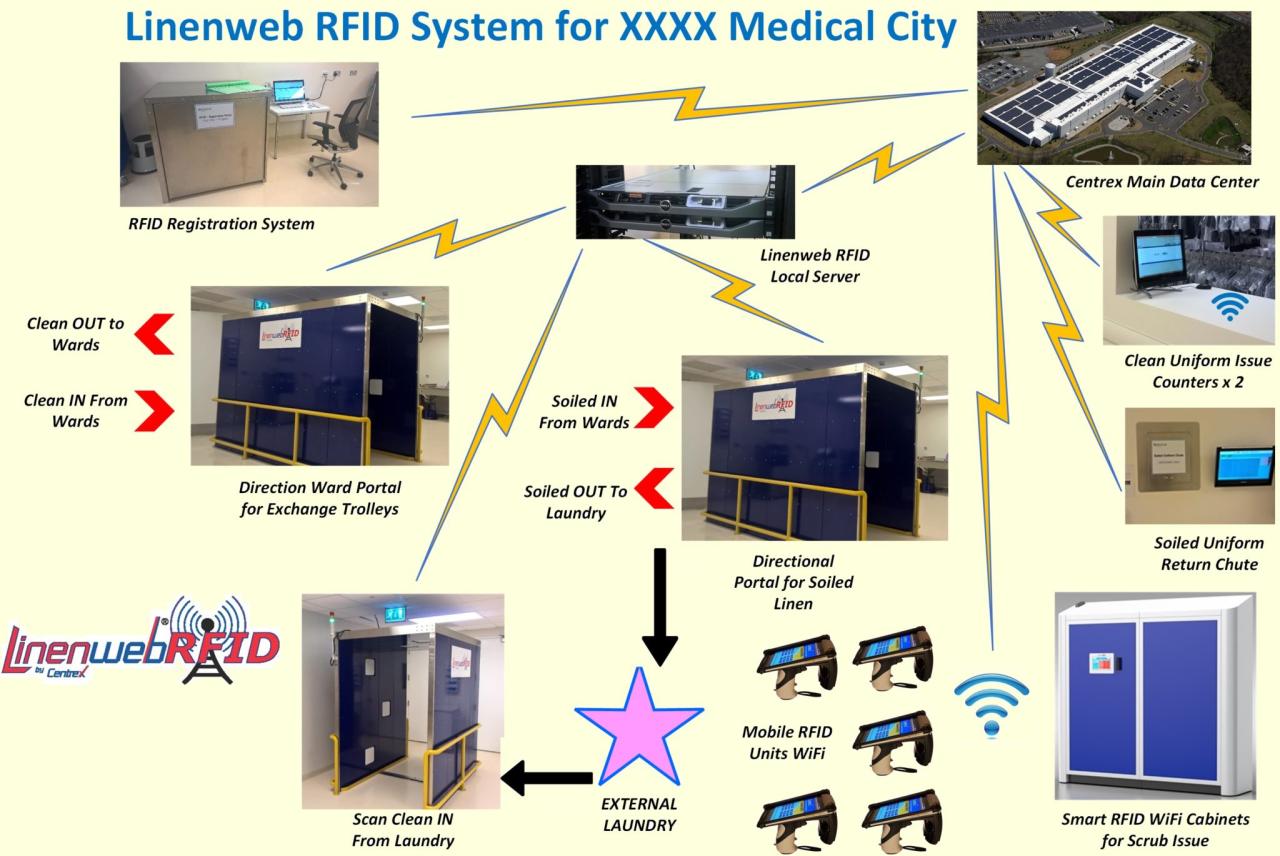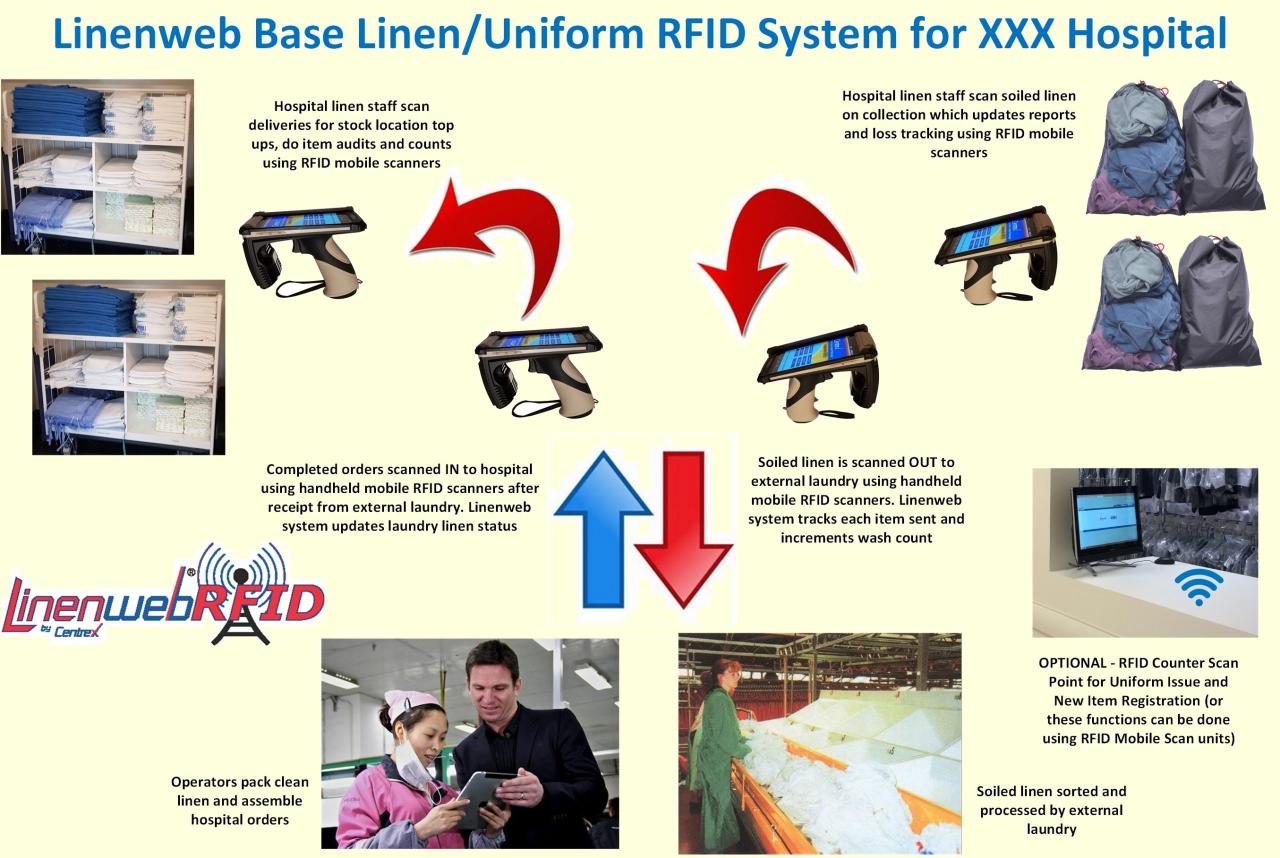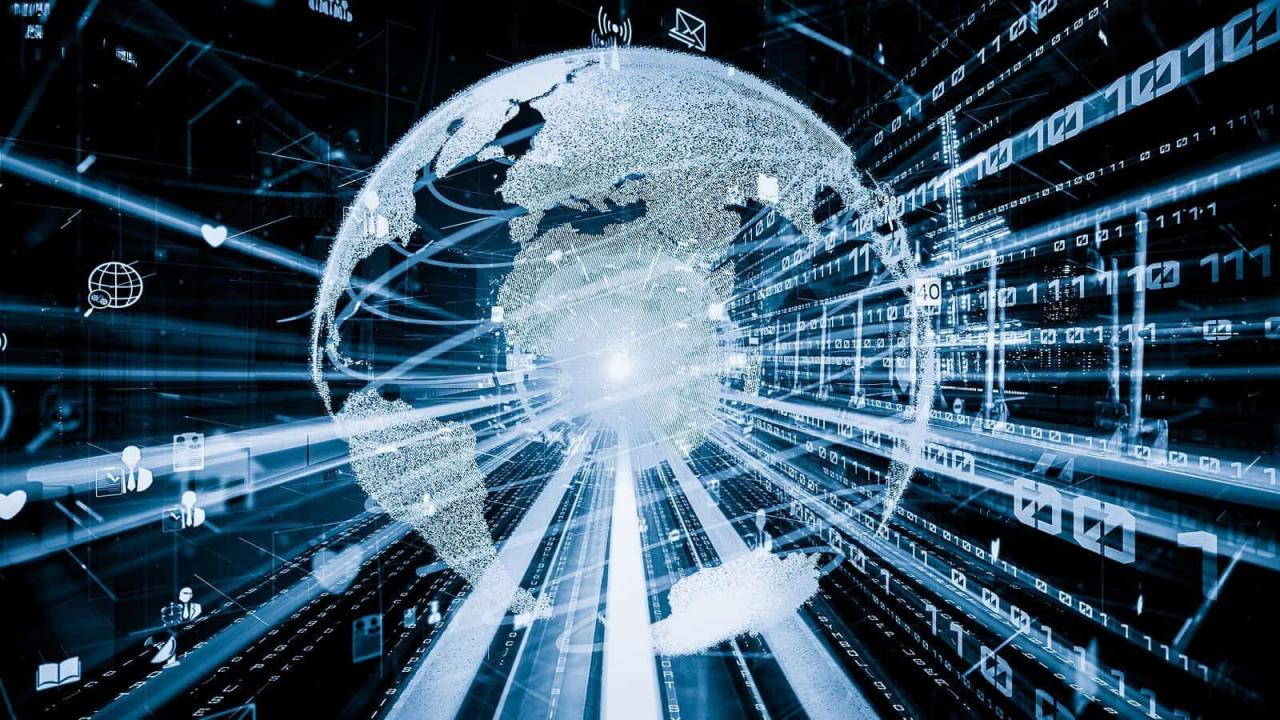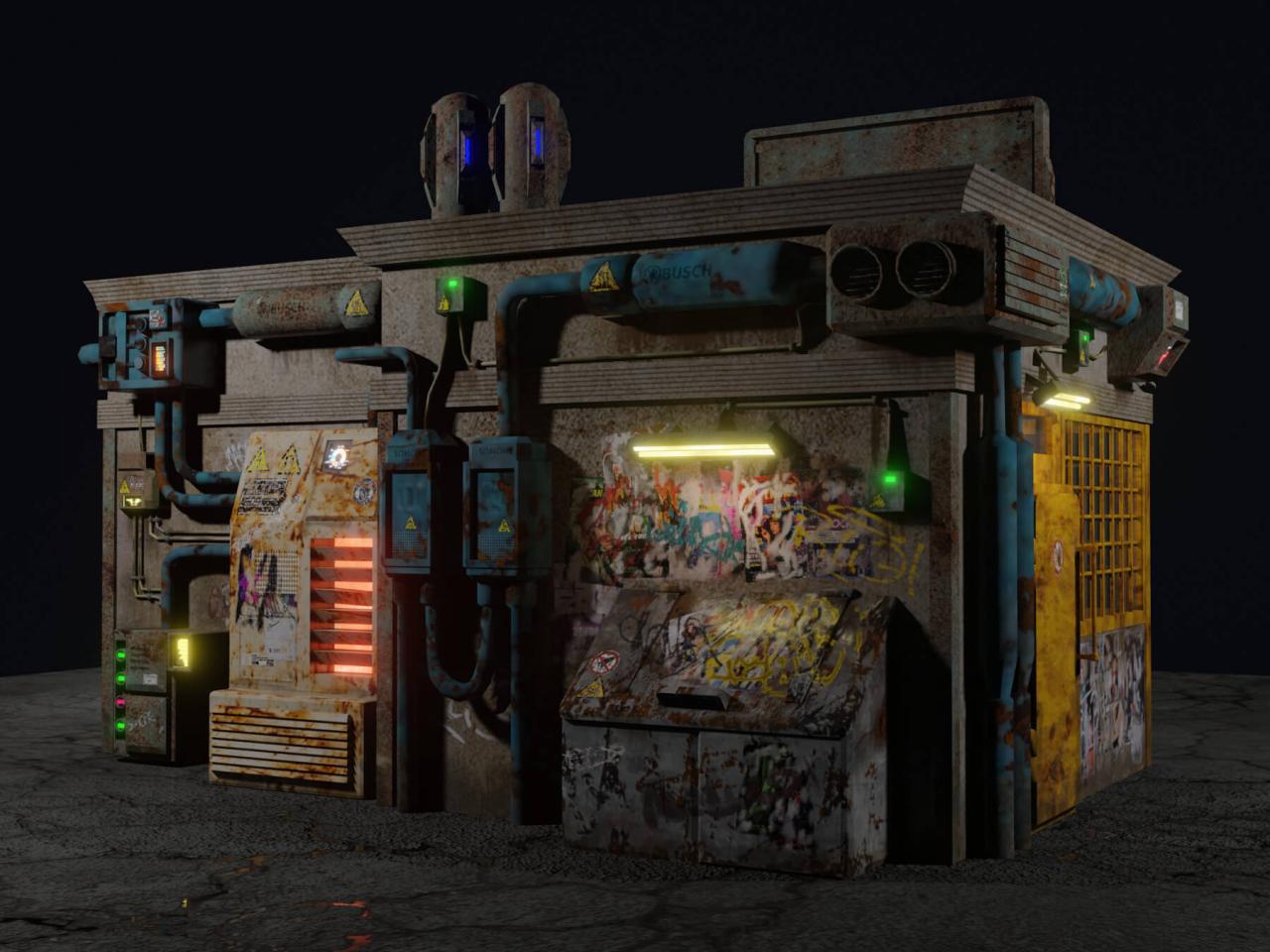Linen Tracking Technology: Streamlining Efficiency and Sustainability
Linen tracking technology has emerged as a game-changer in various industries, revolutionizing the way we manage and track essential linens. From hospitals and hotels to restaurants and laundries, the need […]

Linen tracking technology has emerged as a game-changer in various industries, revolutionizing the way we manage and track essential linens. From hospitals and hotels to restaurants and laundries, the need for efficient linen management is paramount, and linen tracking technology plays a pivotal role in achieving this goal.
Traditional linen management methods often faced challenges like inaccurate inventory tracking, lost or misplaced linens, and inefficient resource allocation. These inefficiencies led to increased costs, operational delays, and even compromised hygiene standards. Linen tracking technology addresses these challenges by providing real-time visibility into linen movement, ensuring accurate inventory management, and optimizing resource utilization.
Introduction to Linen Tracking Technology
Linen tracking technology plays a crucial role in various industries, ensuring efficient management of essential textiles. From healthcare facilities to hotels and restaurants, linen tracking systems streamline operations, enhance hygiene, and optimize resource allocation.
Traditional linen management methods often face challenges that impact operational efficiency and cost effectiveness. These challenges include manual tracking, inaccurate inventory records, and difficulties in controlling linen usage and distribution.
Addressing Challenges with Linen Tracking Technology
Linen tracking technology provides solutions to these challenges, enabling organizations to manage their linen resources more effectively.
Linen Tracking Technology Solutions
- RFID Tracking: Radio-frequency identification (RFID) tags are attached to linens, allowing for automated tracking and identification. These tags transmit unique identifiers that can be read by RFID readers, providing real-time information about linen location, usage, and status.
- Barcode Tracking: Barcodes are another commonly used technology for linen tracking. Each linen item is assigned a unique barcode, which is scanned at various stages, such as laundry, distribution, and usage. This data is captured and stored in a central database, providing comprehensive tracking information.
- Real-Time Monitoring: Linen tracking systems provide real-time monitoring capabilities, allowing organizations to track linen movement, usage, and inventory levels. This real-time data helps identify bottlenecks, optimize linen distribution, and ensure timely replenishment.
- Automated Reporting: Linen tracking technology automates reporting functions, providing detailed insights into linen usage patterns, inventory levels, and operational efficiency. This data helps organizations make informed decisions regarding linen procurement, distribution, and resource allocation.
Implementation of Linen Tracking Technology
Implementing a linen tracking system involves a series of steps that ensure a smooth transition and effective integration with existing processes. These steps require careful planning and consideration of the specific needs of the organization.
Integration with Existing Systems
Integrating linen tracking technology with existing systems is crucial for seamless data flow and operational efficiency. This integration requires careful planning and consideration of compatibility and data exchange protocols.
- Data Synchronization: Ensuring data synchronization between the linen tracking system and other systems, such as inventory management, laundry management, and customer relationship management (CRM), is essential for accurate reporting and decision-making.
- API Integration: Utilizing application programming interfaces (APIs) allows for seamless communication and data exchange between different systems, minimizing manual data entry and reducing the risk of errors.
- Data Mapping: Mapping data fields and structures between different systems is crucial for ensuring data integrity and consistency across the organization.
Data Analytics for Linen Management Optimization
Data analytics plays a vital role in optimizing linen management by providing insights into linen usage patterns, identifying areas for improvement, and enabling data-driven decision-making.
- Linen Usage Trends: Analyzing linen usage patterns over time allows for identifying peak periods, seasonal variations, and identifying potential areas for cost optimization.
- Inventory Management: Data analytics helps optimize inventory levels, reducing stockouts and minimizing waste by predicting future demand and identifying slow-moving items.
- Linen Life Cycle Management: Tracking the lifespan of linen items allows for identifying potential wear and tear patterns, optimizing laundry cycles, and extending the overall life of linen.
Benefits of Linen Tracking Technology
Implementing linen tracking technology offers a range of advantages, from cost savings and improved efficiency to enhanced sustainability and environmental responsibility. This technology provides valuable insights into linen usage patterns, allowing organizations to optimize their operations and make informed decisions regarding linen management.
Cost Savings and Efficiency Gains, Linen tracking technology
Linen tracking technology helps organizations save money and improve efficiency in various ways. By monitoring linen usage, organizations can identify areas where they can reduce waste and optimize inventory levels. This technology can help:
- Reduce linen loss: Tracking linen movements allows organizations to identify and prevent linen loss, which can significantly reduce replacement costs. Studies show that implementing a linen tracking system can lead to a 10-20% reduction in linen loss, translating to substantial cost savings. For example, a hospital with 500 beds and an average linen loss rate of 10% can save up to $50,000 annually by reducing linen loss by 15% through linen tracking technology.
- Optimize inventory levels: Linen tracking technology provides real-time visibility into linen availability, allowing organizations to adjust inventory levels based on actual demand. This eliminates the need for excessive stockpiling, leading to cost savings on storage and handling. A hotel chain with 10 properties can potentially reduce its linen inventory by 15% by implementing a linen tracking system, resulting in significant cost savings on storage and handling expenses.
- Improve linen distribution: Tracking linen movements allows organizations to optimize linen distribution, ensuring that the right amount of linen is available at the right time and place. This reduces the risk of linen shortages and improves patient or guest satisfaction. For instance, a nursing home with 100 beds can achieve a 5% reduction in linen shortages by implementing a linen tracking system, improving resident comfort and care quality.
- Streamline laundry operations: Linen tracking technology provides valuable data on linen usage patterns, allowing organizations to optimize laundry operations. This can involve adjusting laundry schedules, optimizing wash cycles, and reducing energy consumption. By analyzing data on linen usage patterns, a hospital laundry can optimize wash cycles and reduce energy consumption by 10%, leading to significant cost savings and a reduced environmental footprint.
Sustainability and Environmental Responsibility
Linen tracking technology plays a crucial role in promoting sustainability and environmental responsibility. By reducing linen loss, optimizing inventory levels, and streamlining laundry operations, this technology helps organizations minimize their environmental impact. Key benefits include:
- Reduced linen waste: By tracking linen movements and identifying areas where linen loss occurs, organizations can implement measures to reduce waste. This contributes to a more sustainable approach to linen management, reducing the need for frequent linen replacements and minimizing textile waste. A hotel chain with 100 properties can reduce its linen waste by 10% by implementing a linen tracking system, significantly contributing to its environmental sustainability goals.
- Lowered energy consumption: Optimizing laundry operations through linen tracking technology leads to reduced energy consumption. This can involve adjusting laundry schedules, optimizing wash cycles, and minimizing the use of hot water. A hospital laundry can achieve a 5% reduction in energy consumption by optimizing wash cycles through linen tracking technology, contributing to a more sustainable and eco-friendly approach to linen management.
- Reduced water usage: By optimizing laundry operations and reducing the need for excessive washing, linen tracking technology contributes to water conservation. This is especially important in regions facing water scarcity. A nursing home with 100 beds can reduce its water usage in laundry operations by 8% by implementing a linen tracking system, contributing to responsible water management practices.
- Reduced chemical usage: Optimizing laundry operations through linen tracking technology can lead to a reduction in chemical usage. This involves minimizing the need for harsh chemicals and reducing the frequency of washing, leading to a more sustainable and environmentally friendly approach to linen management. A hospital laundry can achieve a 5% reduction in chemical usage by optimizing wash cycles through linen tracking technology, contributing to a cleaner and safer environment.
Case Studies and Real-World Applications: Linen Tracking Technology
Linen tracking technology has proven its worth in various industries, leading to significant improvements in efficiency, cost savings, and customer satisfaction. By analyzing real-world implementations, we can gain valuable insights into the tangible benefits of this technology.
Real-World Examples of Linen Tracking Implementations
The following case studies illustrate the successful application of linen tracking technology across different industries:
| Industry | Implementation Details | Results | Lessons Learned |
|---|---|---|---|
| Hospitality | A large hotel chain implemented RFID tags on all linens and towels. This enabled real-time tracking of inventory, reducing losses and optimizing laundry operations. | Inventory losses decreased by 20%, laundry costs reduced by 15%, and guest satisfaction increased due to consistent availability of clean linens. | Accurate data collection is crucial for effective decision-making. Regular system maintenance and staff training are essential for long-term success. |
| Healthcare | A hospital implemented a linen tracking system using barcode technology. This helped streamline linen distribution, reducing delays in patient care and improving infection control. | Linen delivery times decreased by 10%, reducing patient wait times and improving overall patient satisfaction. The system also helped track linen usage, leading to cost savings. | Clear communication and collaboration between departments are essential for successful implementation. The system should be user-friendly and accessible to all staff members. |
| Industrial Laundry | A commercial laundry facility implemented a linen tracking system using RFID tags. This enabled real-time monitoring of linen movement, improving efficiency and reducing errors. | Increased productivity by 15%, reduced linen losses by 10%, and improved customer satisfaction due to faster turnaround times. | Data analysis is crucial for identifying areas for improvement. The system should be scalable and adaptable to meet future needs. |
Future Trends in Linen Tracking Technology

The linen tracking industry is constantly evolving, driven by technological advancements and the ever-growing need for efficiency and cost optimization in the hospitality sector. Emerging technologies are poised to revolutionize how linen is tracked, managed, and utilized, leading to significant improvements in operational efficiency, cost savings, and sustainability.
Artificial Intelligence and Machine Learning in Linen Management
Artificial intelligence (AI) and machine learning (ML) are rapidly transforming various industries, and linen tracking is no exception. These technologies can be leveraged to analyze vast amounts of data, identify patterns, and predict future trends. AI and ML can optimize linen inventory management, predict linen demand, and streamline laundry processes, ultimately leading to significant cost savings and improved operational efficiency.
- Predictive Maintenance: AI algorithms can analyze data from linen tracking systems to identify patterns in linen wear and tear. This information can be used to predict when linen items are likely to need replacement or repair, enabling proactive maintenance and reducing unexpected downtime.
- Automated Inventory Management: AI-powered inventory management systems can analyze real-time data on linen usage and predict future demand, allowing for optimized stock levels. This reduces the risk of overstocking or running out of linen, leading to significant cost savings.
- Smart Laundry Optimization: AI and ML algorithms can analyze data from laundry machines and linen tracking systems to optimize laundry processes. This includes optimizing washing cycles, reducing water and energy consumption, and minimizing the risk of damage to linen.
Hypothetical Scenario of Future Linen Tracking Technology
Imagine a future where linen tracking technology is seamlessly integrated into a hotel’s operations. Smart RFID tags attached to each linen item provide real-time location tracking, allowing for accurate inventory management and efficient linen retrieval. AI-powered systems analyze data from these tags to predict linen demand and optimize laundry schedules.
- Automated Laundry Scheduling: Based on real-time linen usage data, the system automatically schedules laundry runs, ensuring that clean linen is always available when needed. This eliminates the need for manual scheduling and minimizes the risk of running out of linen.
- Real-Time Inventory Tracking: Hotel staff can access real-time information on linen availability through mobile devices. This enables them to quickly locate and retrieve the required linen, reducing time spent searching for linen and improving guest satisfaction.
- Predictive Maintenance: AI algorithms analyze data from the RFID tags to identify patterns in linen wear and tear. This allows for proactive maintenance, reducing the risk of linen damage and extending the lifespan of linen items.
Last Word

As we move forward, linen tracking technology is poised to become even more sophisticated, incorporating artificial intelligence and machine learning to further enhance efficiency and sustainability. By embracing these advancements, businesses can unlock new levels of optimization, minimize waste, and contribute to a more environmentally responsible future.
Linen tracking technology has come a long way, offering real-time visibility into the entire laundry process. For facilities looking to optimize their spray painting operations, CA Technologies air-assisted airless systems offer exceptional efficiency and precision. By integrating such advanced technology, linen tracking systems can further enhance their performance, ensuring a seamless and sustainable workflow.









